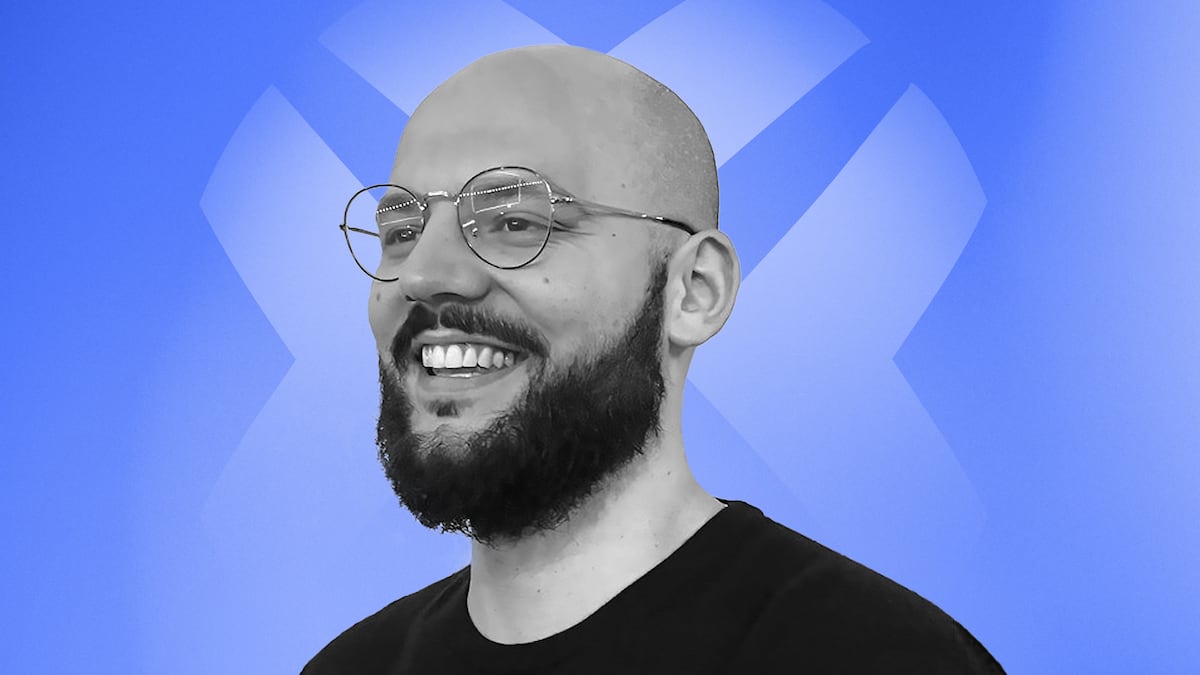Erik Gjergji is the Head of Business Development at BTCC Exchange, where he has been driving business growth through innovative and forward-thinking strategies since 2023. He brings a dynamic approach to the crypto space, leveraging his expertise to expand the exchange's market presence and build strategic partnerships.
We sat down with Erik Gjergji at TOKEN2049 in Singapore to discuss BTCC’s rapid user growth, its expansion from a pure exchange to a comprehensive Web3 platform, and the strategy behind its high-profile sports sponsorships.
Erik Gjergji is the Head of Business Development at BTCC. His current focus is to guide the 14-year-old exchange’s transition into a full-scale Web3 platform by expanding its product suite and scaling its global footprint into new regions, such as Latin America and the Middle East.
Joining around 2022, he has been instrumental in a period of explosive growth that has seen the user base grow from 2 million to over 10 million. His work involves strategic realignments and forging high-impact partnerships, such as the recent collaboration with NBA All-Star Jaren Jackson Jr., to position BTCC for its next phase of growth.
Read more about their global expansion plans in the interview below.
What specific user problems can’t BTCC solve as a pure exchange that it can solve as a full Web3 platform, and what changes have occurred in the last 12–18 months that make this the right moment?
Transitioning to a full Web3 product means providing users with more ways to interact with their digital assets. For us, staking is a key feature set that is set to launch in 2026. Alongside features like yield farming, this will bring us in line with other Web3 platforms. The exchange has been operating for 14 years, which gives us significant credibility. We aim to grow steadily in a manner that aligns with our goals and provides our users with a sense of security and safety.
Regarding the changes that have occurred, it’s interesting you mention 12 to 18 months, as I would say the changes really started around 2022 when I joined. The exchange was headed in a different direction, but we shifted our strategy for user acquisition and partnerships. The last 12 to 18 months have been incredible; we increased our user base from 5 million to 10 million, reaching that milestone just a few weeks ago. This moment is about moving beyond just the crypto space and delivering value to the real world.
You plan to triple the headcount to 3,500 within six months, with 1,200 engineers accounting for 35% of the expansion. How is that allocation split between function and region, and what quarter-by-quarter product milestones must each team hit to validate the ramp?
That growth is crucial because exchanges are increasingly becoming like nation-states; we need to develop into a financial tool that anyone can access. Our global expansion drives the allocation. We’re expanding our presence in Latin America with the establishment of new offices and teams.
All of these new regions require new heads of departments, compliance officers, engineers, and localized business development teams. The KPIs for these teams come with the expansion. First, we establish the locations and teams to support our existing users there, then we invest more to scale our presence and grow the exchange.
Your first major sports sponsorship brought NBA All-Star Jaren Jackson Jr. on as a global ambassador and was paired with trading campaigns. What user-growth and conversion signals have you seen in North America specifically, and what will you repeat or retire before pursuing additional athlete/team partnerships next year?
The partnership has been very successful, especially in North America, as a basketball player suits the US market perfectly. We’ve seen a massive boost in engagement. For example, before the partnership, a new user might spend only two to three seconds on our page before leaving. Now, they spend 20 seconds, then sign up, deposit, and start trading. That’s a strong sign of conversion.
Since it has been so successful, it validates the model. Now, imagine a partnership of an even greater caliber, such as an F1 team or a professional football team. We may or may not have something like that in the works, but we do have exciting plans ahead.
As BTCC scales KOL/partner programs worldwide, how do you measure ROI by region? And what compliance guardrails or red flags trigger a hard “no,” regardless of audience size?
When it comes to KOLs, we initially focused on the English-speaking, westernized market. While we are still working there, we’re falling behind on localization in other major regions. There are millions of Portuguese-speaking users in Brazil, and Latin America is a vast region.
French is also widely spoken in parts of Africa and Europe. Hence, once we establish our influencer presence in these regions to the same level as our English-speaking program, our growth could be exponential, potentially reaching 50 million users in a short period.
As for red flags, we prefer a steady growth path over an aggressive one. We always communicate with regulators and maintain good relationships. If they don’t want us to operate in a region, we comply. Our priority is to look after our users while ensuring compliance and legal support. We avoid pursuing rapid growth if it jeopardizes our users’ safety, as that could lead to a downward spiral.
BTCC has announced that it will introduce additional spot pairs and Web3 features in 2026. What features can users expect by 2026, and when will they go live?
When I started, we were solely a derivatives exchange. Last year, we finally launched a spot team, and they have been incredible. By next year, the spot team is expected to grow to around 15-25 members, and we plan to list anywhere from 30 to 50 new coins each week.
The product is now out of beta and functions very well. With more spot pairs, we need to provide users with more options for utilizing those assets. This means adding features like staking and yield farming, which will transform BTCC from just a trading product into a full-fledged Web3 platform.
In 24–36 months, what will BTCC look like as a full-scale Web3 platform versus today’s exchange model?
My ideal vision is that, within two to three years, BTCC will become a comprehensive financial tool. I would love to see us offering debit cards and more fiat on-ramps, making us more accessible globally. People have all this crypto, but they often have to off-ramp it and pay taxes just to use it. We should be able to spend it freely.
I hope we reach a point where people can use their stablecoins to make direct purchases. Currently, we’re a trading product, but we will evolve into a full-blown company product that people can utilize for their financial needs.


